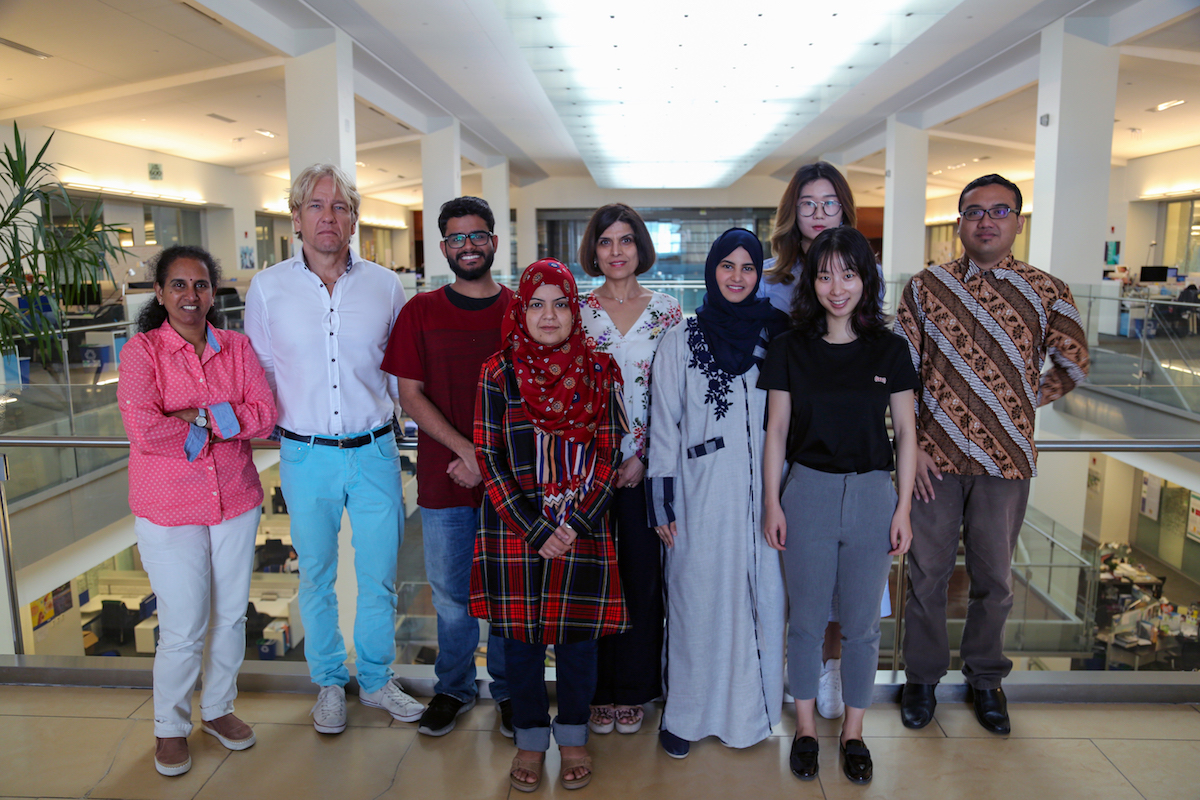Developing an AI system that thinks like a scientist

Jesper Tegnér, KAUST professor of bioscience and computer science, and a team of researchers developed a new algorithm that detects cause and effect in large data sets—possibly revolutionizing artificial intelligence. Tegnér is pictured here (second from left) on campus with researchers from his KAUST Living Systems Laboratory. Photo by Meres J. Weche.
Researchers at KAUST developed a new algorithm that can detect cause as well as effect in large data sets, potentially revolutionizing artificial intelligence (AI).
Despite the recent progress in AI, we are still far from general purpose machine intelligence with the capacity for reasoning and learning across different tasks. Part of the challenge is to move beyond pattern detection towards techniques to discover underlying generative models and causal mechanisms behind the patterns.
"There is a need to investigate new types of foundational machine learning techniques beyond current architectures such as deep neural networks. Our method provides a framework to build algorithmic systems capable of disentangling causality from observations," stated Jesper Tegnér, KAUST professor of bioscience and computer science, who heads the KAUST Living Systems Laboratory.
Machine learning and AI techniques are being ubiquitously developed and applied in industry, science and society. Examples include specialized systems for speech recognition, computer vision tasks, medical applications and online transactions, which are commonly referred to as narrow AI.
KAUST Professor of Bioscience and Computer Science Jesper Tegnér (second from left) heads the KAUST Living Systems Laboratory. He and his lab team are pictured here on campus. Photo by Meres J. Weche.
The new approach aims to find the underlying algorithmic models that generate data to help scientists uncover the dynamics of cause and effect. This could aid researchers across a huge range of scientific fields, including cell biology and genetics, to answer questions that typical machine learning cannot.
"This technique can equip current machine learning methods with advanced complementary abilities to better deal with abstraction, inference and concepts such as cause and effect that other methods, including deep learning, cannot currently handle," said Hector Zenil, a research consultant in the Living Systems Laboratory.
Jesper Tegnér (right), KAUST professor of bioscience and computer science, works on campus with research scientist Dr. Hayedeh Behzad from Tegnér's Living Systems Laboratory. Photo by Meres J. Weche.
Tegnér and his team intend to apply the new approach to experimental single-cell genomics techniques to detect and separate different genomic regulatory programs generating the diversity of cell types. This could lead to advancing the bioengineering of cells, potentially paving the way for therapies targeting malfunctioning cells in diseases like Parkinson's disease, diabetes or cancer.
Stable and reprogrammable cells constitute the foundational building blocks of all living systems. Such plastic and stable regulatory genomic programs may hold clues informing us about how to design a new generation of AI techniques with enhanced capacity for learning and reasoning.
Related stories:
- Rethinking plastics
- Disease in a dish
- Robotics, Intelligent Systems, and Control Lab prepares robots to have swarm intelligence
-
In pursuit of global food security

